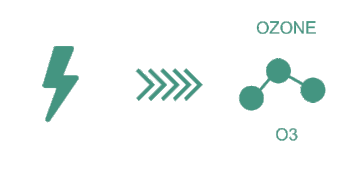The patient, a muscular Mexican field hand, husband and father, was 48 years old when I saw him attempting to work on 12/6/2012 looking extraordinarily ill. He had exception- ally severe muscle pain involving all extremities.
He related recent diagnosis of dermatomyositis, taking several drugs and still rapidly worsening (as early as 1/2012 his ANA was 1:1280 and aldolase 20.5 U/L (Ref < 8.1 U/L).
A skin biopsy 12/2011 showed infiltration of lymphocytes and macrophages, with basement membrane thickening). He had been diagnosed with dermatomyositis on 8/2/12 after several misdiagnoses were made of “sun rash” and eczema. He had no family history of autoimmune disorders. The prognosis given by his conventional physicians was “poor”.
He had quickly become extremely weak and found it all but impossible to do his field chores and earn a living. His skin had confluent brown macular rash with violet hue, almost ecchymotic on the extensor surfaces of the forearms and left ankle. He had an inflamed facial butterfly facial rash, moon facies, Gottron’s papules on the dorsal surface of hands, and nail cuticle telangiectasias. His muscles were very weak and tender. He exhibited classic signs of iatro- genic Cushing’s disease (Figs. 1, 2, 3).
Drugs for immunosuppression: prednisone 80 mg daily, methotrexate 10 mg/week, Plaquenil 200 mg twice daily, azathioprine 150 mg daily (methotrexate was discontinued after a short course due to spike in liver enzymes. AST rose to 130 on 28/8/12); acetaminophen/codeine twice daily for pain.
Over several months, his doctors repeatedly attempted weaning to 60 mg prednisone. However, every time he reached that level, his disease sharply flared. In March 2012, his CK was 2088 (44–96 U/L), CK (MB) 103.99, ANA 1:128, ESR 1. On 6-6-13, CK peaked at 9293 U/L as his treating physicians struggled to control his deteriorating condition with immunosuppressive drugs. Prednisone dose was intermittently raised to 120 mg/daily. I was not involved in any aspect of his drug regimen (until weaning after his dental work was completed).
Additionally, early in his disease, he was treated for Helicobacter pylori receiving amoxicillin, metronidazole, bismuth subsalicylate, and proton pump inhibitors. He also had a course of INH and rifampin for “latent” tuberculosis during this period, without change in the dermatomyositis.
Based on history and physical examination actually per- formed in his agricultural workplace, I suspected underlying and asymptomatic dental infections and sent him for dental X-rays of incisors and an extraction site. I also immediately started ozone therapy (described below) after obtaining full informed consent.
Dental X-rays confirmed my suspicions: failing endodon- tics at numbers 7, 8, and 9, and osteonecrosis at extraction site 32. I suggested that he have the infected teeth removed, but he refused through May 2013. However, by then he was up to 120 mg prednisone and his field labor was made possible by use of ozone therapy.
In July 2013, he finally underwent extraction of the fail- ing root canals at 7, 8, and 9, with limited improvement. I suspected more subclinical dental infections and implored him to seek further treatment. However, cost was a major factor. He finally had more definitive dental work (fall 2014) and had teeth 4, 15, and 30 extracted. Following this, in conjunction with ozone therapy, I weaned his prednisone without incident or exacerbation (about 5 mg every other week). Prednisone was discontinued by 1/15. Plaquenil was discontinued the following month (2/15). He suffered no skin or muscle symptoms during this period or any clinical signs of inflammation.
His ozone therapy was as follows:
HBO3 beginning June 12, 2012 for a total of 13 treat- ments through 3-13-15 as follows:
6-12-12: 12,000 mcg; 2-2-13: 24,000 mcg; 10-15-13: 9000 mcg;
10-17-13: 9000 mcg; 1-11-14: 14,000 mcg; 5-10-14: 28,000 mcg;
8-2-14: 28,000 mcg; 11-13-14: 14,000 mcg; 3-13-15: 28,000 mcg;
8-1-15: 28,000 mcg; 3-18-16: 28,000 mcg; 6-24-16: 28,000 mcg;
1-17-17: 28,000 mcg (dates: month-day-year).
Ozone treatments improved his strength, vitality, and pain virtually immediately, even before the removal of oral infec- tions, but results were partial only. Ozone therapy did appear to be the key factor in keeping him productive in the field, earning his living, during the entire period. He had been rapidly deteriorating clinically on drug therapy alone and was unable to work until receiving ozone therapy.
He also received DIV ozone averaging once every 2 weeks for a total of 30 sessions between 11/19/14 and 4-27-15. This consisted of 20 cc of O2/O3 gas at 25 mcg O3/cc.
Plaquenil was discontinued in 2-15. He continues to receive HBO3 therapy quarterly as a courtesy in ozone train- ing classes. He remained totally asymptomatic until March 2017, telling me every time I saw him (weekly) “I never felt better”.
In March 2017, he noted slight achiness with faint skin blotches. His CK (3/2/17) was 523 U/L. His doctors were prepared to restart the powerful immunosuppressive drugs. My examination suggested at least two more occult infected dental sites. I suggested he return to his dentist. Within 2 weeks, his dentist removed two more infected teeth, num- bers 2 and 15 and his symptoms were gone virtually imme- diately. On June 10, 2017, his CK had dropped to 313 and he was again “never feeling better”. He suffered no adverse of unanticipated events.
